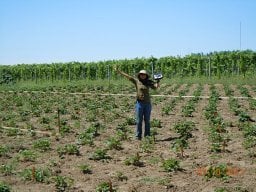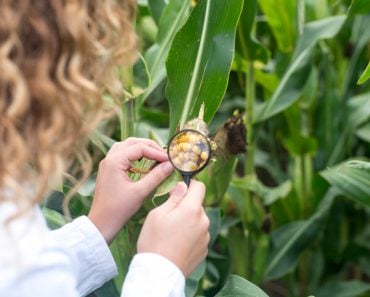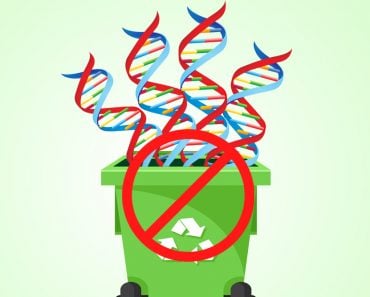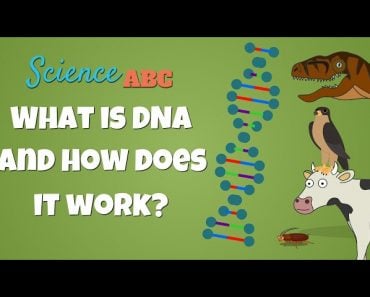Table of Contents (click to expand)
Gene-edited crops have a key difference from transgenics in that they do not contain foreign DNA incorporated in them. This fact has resulted in higher acceptance and simpler regulatory approval than the transgenic options (GMOs).
The word ‘GMO’ makes many people uneasy and nervous.
The first genetically modified organism (GMO) food crops were introduced in the 1990s and have since then been shrouded in controversy. The main issue with GMOs that critics oppose is the introduction of ”foreign DNA” that critics believe may have unintended consequences in the consumer. As a result, the commercialization of GMO crops faces considerable legal challenges (and high expenses), making it unfeasible for smaller organizations to develop and commercialize GMO crops.
On the other hand, there are new gene-edited crops emerging. These are developed using a newer method of genetic engineering, and regulatory bodies don’t categorize “gene-edited” crops as GMO crops. This means that gene-edited crops have relatively easier regulatory approval process and, potentially, wider acceptance by consumers.
Clearly, both GMOs and gene-edited crops are products of genetic engineering, but one is a GMO and the other is not. Why is that the case?
The differences are in how they modify DNA.
(Although gene editing has numerous applications in medical and animal science, in this article, we will discuss only its application in plants and agricultural food crops.)
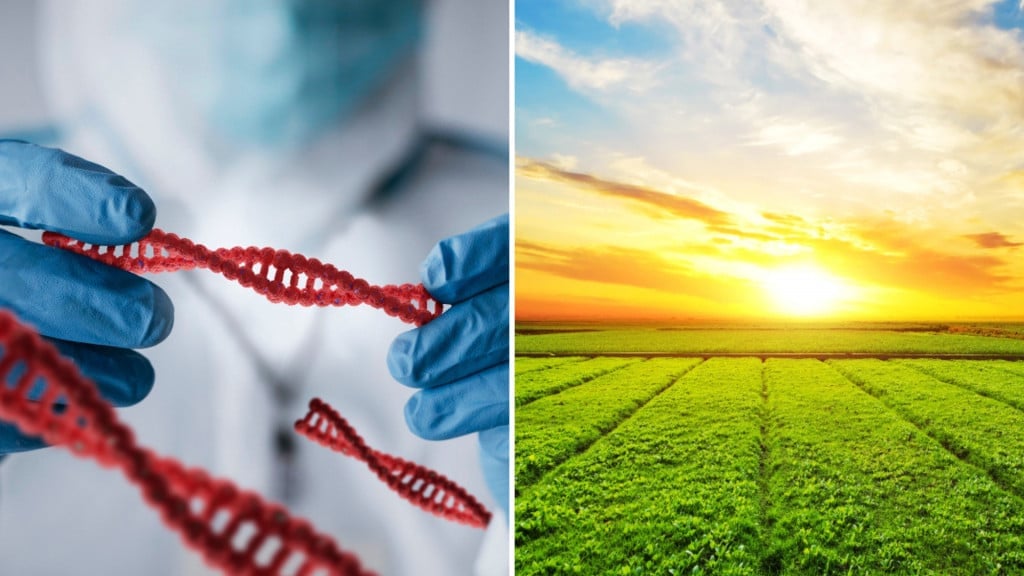
Recommended Video for you:
First, What Are GMOs Aka Transgenics?
Transgenics or Genetically Modified Organisms (GMO) were introduced to the world in the 1990s. The acronym GMO refers to an organism that contains one of more ‘foreign’ pieces of DNA. This foreign DNA may be from another member of the same species or a different species.
A classic example is Bt corn. Bacillus thuringiensis (Bt) is a bacterium that lives naturally in the soil. It possesses genes that produce proteins that are toxic to certain insects. These toxins extracted from the bacteria are then sprayed on crops as an organic pesticide. However, when sprayed on the surface of crops, they degrade in the presence of the sun’s UV light and are washed off with rain.
Back in the 1990s, a GMO corn variety was developed that contained the genes from the bacterium that code for the toxin proteins. This GMO corn variety produces the Bt protein in their leaves. When caterpillars eat these leaves, the protein damages their gut and they die. Since these proteins are produced in the plant tissue throughout the season, there is no need to continue spraying the crop multiple times.
Numerous scientific organizations, including the Federation of American Scientists, have attested that although this toxin kills caterpillars, there are “no known effects to mammals, fish, or birds, and they appear safe for consumers”.
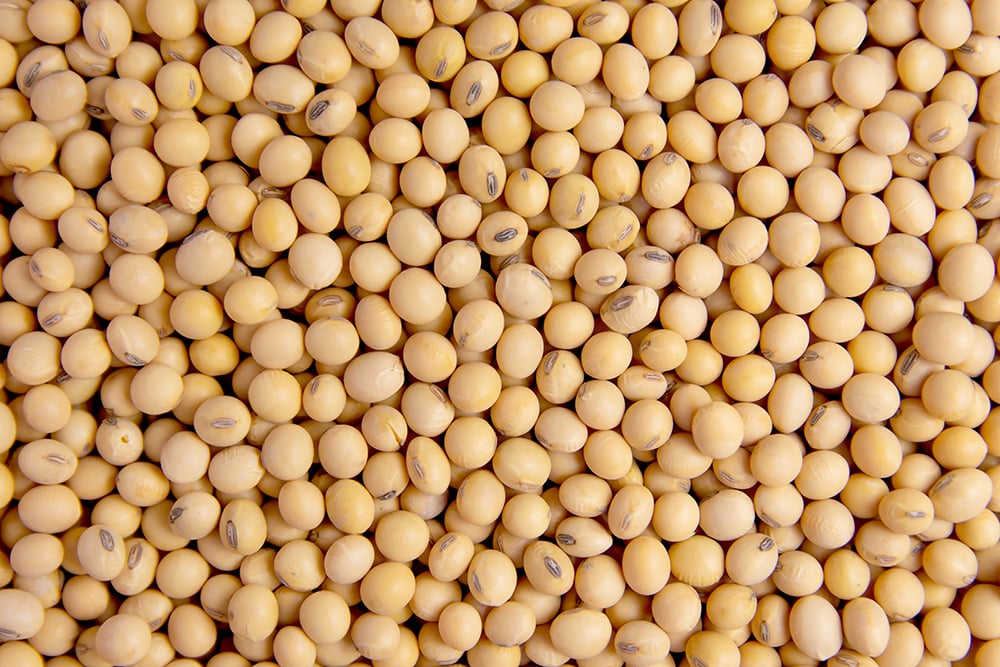
However, anti-GMO organizations argue that the foreign DNA in corn can cause adverse effects in humans. As a result, the process to get regulatory approval is long, complicated, and extremely expensive. Only GMO varieties of selected large commodity crops developed by large seed companies have been commercialized. Smaller companies or research institutes simply cannot afford such an investment.
To date, GMO varieties of only 10 crop species are grown commercially (in some countries): corn, soybeans, sugar beets, potato, summer squash, papaya, apples, canola, cotton and alfalfa. Given that corn and soybean products are present in a wide variety of food products, GMOs are present in a large part of the food supply, especially in western countries.
What Is Gene Editing?
Gene editing (also known as genome editing or CRISPR) is the latest advance in genetic engineering. Gene editing via CRISPR is a technology that allows us to correct, delete, add or modify the DNA sequence of a gene. It is faster, quicker, and much more specific than GMOs.
That said, it does require extensive knowledge about the genome sequence and gene function, which is now available to scientists due to advancements in molecular genetic techniques.
This is how it works.
Gene editing uses highly specific enzymes that act like scissors to cut the two DNA strands at a specific location.
Once the DNA is cut, the cell’s own repair mechanism comes in to repair the site, but the repair process is imperfect. It introduces errors, which can potentially deactivate the gene or alter its function. Scientists then screen cells to identify changes in gene function.
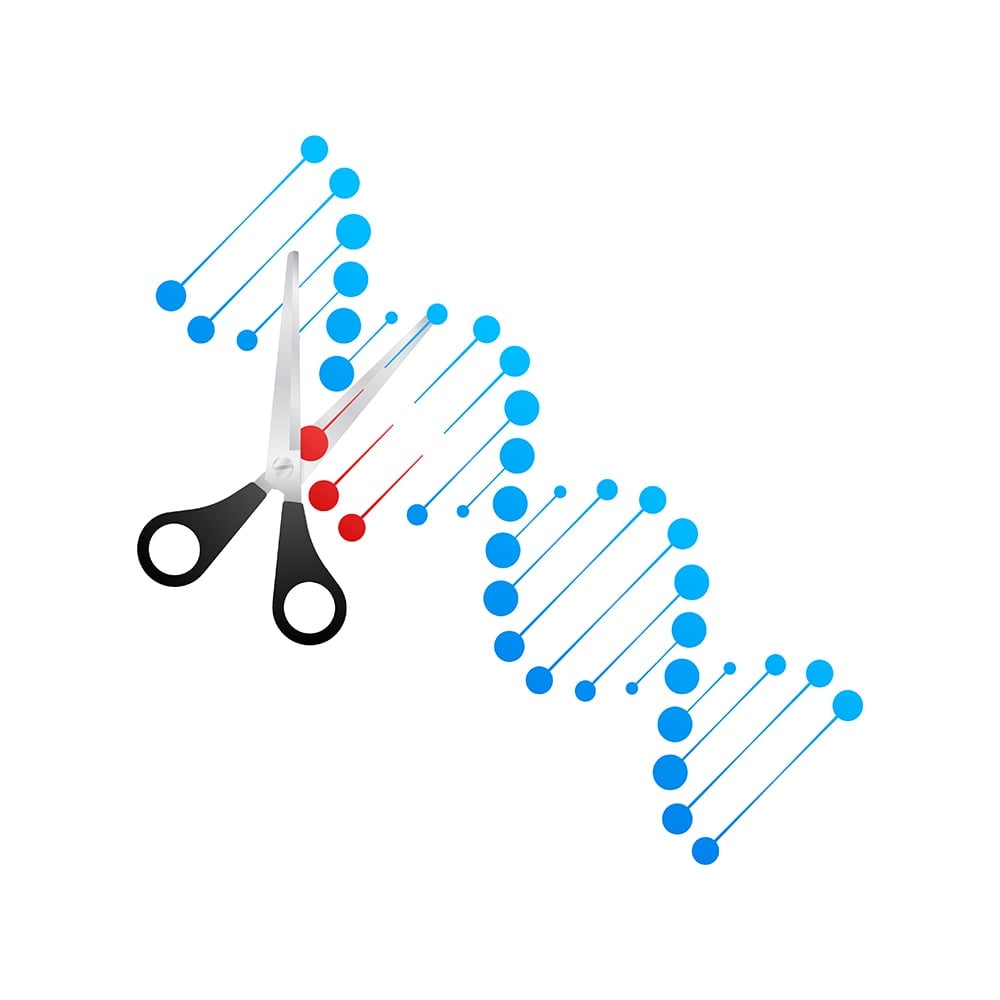
Gene editing also allows us to add customized sequences as replacement DNA. These customized sequences are incorporated into the cut region using the cell’s in-built mechanism in a process called homologous recombination.
CRISPR/Cas9
One of the most common tools used in gene editing is the CRISPR/Cas9.
CRISPR stands for ‘clustered regularly interspaced short palindromic repeats’ and Cas9 stands for ‘CRISPR associated protein 9’.
The CRISPR system consists of two components: a customized RNA designed to match the sequence of the target gene at a specific location, and an enzyme called Cas9. After the customized RNA finds the matching section of DNA, it binds to it. The Cas9 enzyme cuts both the DNA strands at this location. Now the cell’s repair mechanism gets to work to repair this break, and during this process it introduces variations (mutations). Researchers screen these variations and select the one that gives the gene the desired function.
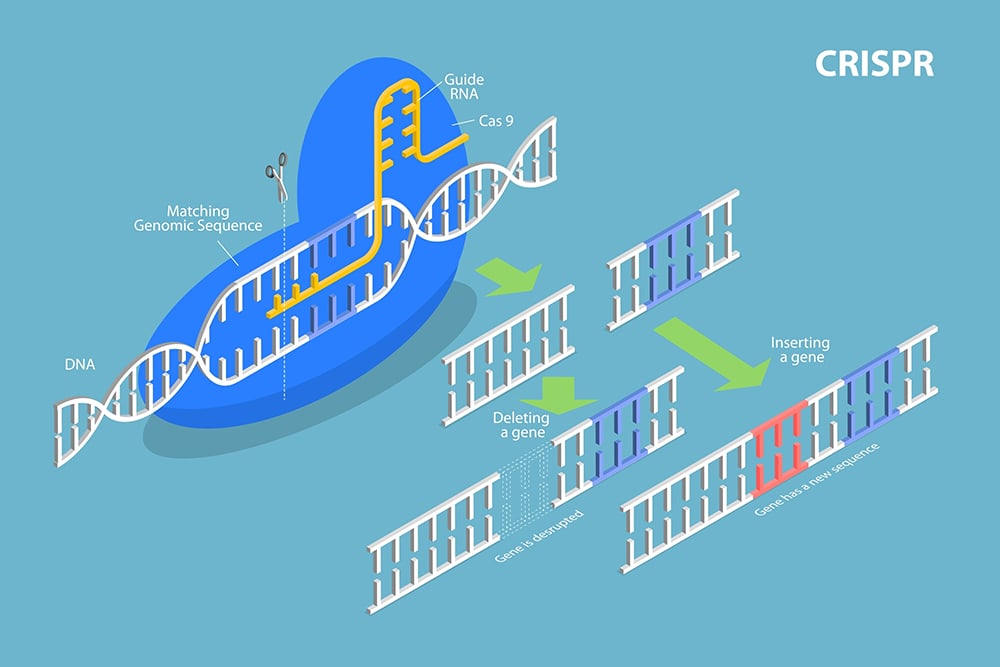
Other tools such as ZFN (zinc-finger nucleases) and TALENs (transcription activator-like effector nucleases) also exist, but they are less frequently used.
The gene-editing technology is derived from a natural system used by bacteria and other single-celled organisms to protect against viral attacks.
For example, if a particular plant variety is susceptible to a pathogen, the scientists first identify which gene is responsible for this susceptibility. Then they compare this gene sequence to that of the varieties that are resistant to the pathogen. During this process, they might identify regions of the gene sequence that have ‘mistakes,’ which make the variety susceptible. In such cases, researchers can use the gene-editing technology to ‘correct’ that mistake.
Gene-edited Food Crops In The Market
A few gene-edited crops have been already been commercialized.
In 2019, a high oleic acid soybean, which produces less saturated fatty acids, was approved for sale in the US. In 2021, Japan commercialized a gene-edited tomato that produces high levels of GABA (a neurotransmitter that produces a calming effect and reduces stress). In 2023, a non-pungent variety of mustard greens was commercialized in the US. Also this year, China approved its first gene-edited crop: a soybean variety with high levels of oleic acid.
What Makes Gene-Edited Crops Different From GMOs?
Although both gene editing and Agrobacterium-mediated genetic engineering result in organisms with modified genetic constitution, the terms GMO and transgenic are used (in popular vocabulary) to refer to the older technology where ‘foreign’ DNA would be introduced.
This presence of foreign DNA distinguishes the technologies. Gene-edited crops introduce no foreign DNA into the plant.
This gives gene editing an edge, at least when it comes to regulations. One of the main criticisms levied against GMOs is that it introduces a foreign piece of DNA into the organism, which concerns critics about the safety of this foreign DNA, especially when it comes to our food.

Regulatory Approval For Gene-Edited Crops
Since gene editing is a relatively new technology, countries are still developing a regulatory framework for it. However, based on the progress so far, it appears that regulatory hurdles for gene-edited products will be less challenging than for traditional GMOs
In the US, traditional GMOs were regulated by the EPA, the Environmental Protection Agency (to determine if the GMO has any impact on pesticide use), the USDA, the United states Department of Agriculture (to determine if the GMO has potential to become a weed and overtake healthy crops), and the FDA, the Food and Drug Administration (to determine if the GMO is equivalent to the original crop and if there are concerns about allergenicity).
Gene-edited crops, however, are regulated like conventional crops. This means that they do not have to go through additional regulatory processes like GMOs, and neither do they need a ‘gene-edited’ label.
Laws that regulate transgenic or GMO crops in Europe are very stringent. All GMO crops that are cultivated or sold in Europe need approval.
Until now, Bt corn is the only GMO crop that has been approved in Europe. Bt corn was approved in 1998 and its approval has expired. The application for renewing the approval is still pending, along with 58 other applications for GMO crops. Several countries in Europe (such as Germany, Austria, Bulgaria, Luxembourg, Poland, Hungary, Greece and Italy) also ban the cultivation of GMO crops. However, some GMO crops are imported into Europe, mostly as animal feed.
Given the strict regulations for GMOs, scientists and seed companies were apprehensive about what the regulation framework for gene-edited crops would be like in Europe. In July 2023, the European Union made the decision that gene-edited crops will not have to go through the extensive regulatory processes to which traditional GMOs are subjected.
They proposed a draft law that exempts gene-edited crops from the stringent regulatory hurdles of GMOs.
If this law comes into effect, it would mean that gene-edited crops with added disease resistance, improved quality, or climate resilience can be commercialized in a shorter time and with less expense, allowing both farmers and consumers to benefit from this technology.
In March 2023, England introduced a change in their laws that would allow the commercial development of gene-edited crops. In May 2023, China approved commercialization of a gene-edited soybean. There are no commercial gene-edited crops in India. However, in May 2022, the Government of India announced that gene-edited crops, without any foreign genes inserted, will not be regulated like transgenic crops and allowed field trials of gene-edited crops that are ‘free of introduced exogenous DNA’. In 2019, Australia declared that gene-edited crops will not be classified as GMOs if they do not contain foreign DNA. There are no commercial gene-edited crops in African countries and no defined regulatory processes. However, Kenya and Nigeria are discussing how gene-edited crops will be regulated.
It appears that gene-edited crops will face lesser regulatory hurdles than GMOs. When governments and regulatory bodies take a step towards adopting new technologies, it helps to build consumer confidence and acceptance. We can hope that consumers will accept gene-edited crops so that we can use this technology to adapt our crop varieties to the imminent challenges of climate change, new disease pressures, and greater demands for food production to support our ever-increasing population.
References (click to expand)
- European Commission proposes loosening rules for gene ....
- GMOs and gene editing: What's the difference?.
- Buchholzer, M., & Frommer, W. B. (2022, July 16). An increasing number of countries regulate genome editing in crops. New Phytologist. Wiley.
- Yang, C. J., Samayoa, L. F., Bradbury, P. J., Olukolu, B. A., Xue, W., York, A. M., … Doebley, J. F. (2019, March 6). The genetic architecture of teosinte catalyzed and constrained maize domestication. Proceedings of the National Academy of Sciences. Proceedings of the National Academy of Sciences.
- CRISPR-Created Foods are Different than GMOs. It's ....

